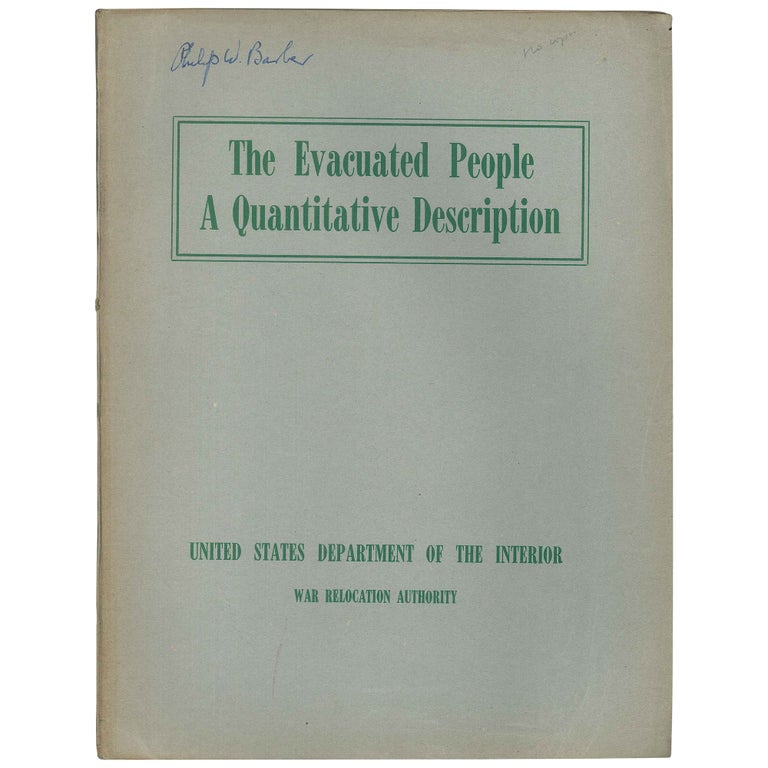
Japanese Internment, by the Numbers
The Evacuated People: A Quantitative Description
Notes: An extensive compilation of statistics about the Japanese Americans who were interned during the Second World War, with some demographic comparisons to the US population as a whole (for example, the folding table shows that the internees were disproportionately of military age, between 15 and 24 years old, as compared with the US as a whole).
Of particular interest are tables showing the population of each of the camps, by month, during the war (table 6); county-by-county totals of the persons interned at each of the camps (table 19); the number of men who joined the army after internment, by camp (table 49); the tabulation of responses to the loyalty oath "Question 28" (Section IX); and the report on the "renunciants" who refused to declare loyalty to the US after they were interned (Sections X and XI).
The loyalty oath generated considerable unease among the internees, as it asked them to renounce their allegiance to Japan. Many American citizens felt this was a trap—agreeing to do so suggested they had loyalty to Japan, which in almost all cases was false, and would therefore justify their internment. Japanese immigrants, who were prevented from becoming American citizens by anti-Asian immigrations laws, were also trapped—renouncing Japan would make them stateless as they would then be neither American nor Japanese. Sections IX to XI document the thousands of interned Japanese who protested their internment and who were often relocated to Tule Lake, the grimmest of the camps in remote northeastern California, as a result.
Table 19 is useful for determining the most likely destination of an internee based on where they lived prior to 1942. For example, of the 12,848 Washington state residents who were relocated, 7,240 ended up at Minidoka. Nine hundred and fifty—almost all from Yakima County—went to Granada (Amache, Colorado). A total of 4,366 Japanese Washingtonians ended up at Tule Lake, or one in three, much higher than the overall average of one in seven.
As a government document, this report is widely held in institutions but is uncommon in commerce as it seems to have received relatively little distribution outside of governmental circles.
xvi, 200 pages; folding table.
Edition + Condition: First edition (first printing). A very good or better copy in wrappers. With the ownership signature of Philip W. Baker, who worked at the Heart Mountain relocation camp and, in 1943, chaired the Relocation Committee for the War Relocation Authority, which sought to find work and housing for internees outside of the camps. (See memo from D. S. Myer, "The reluctance of center residents to accept offers...", May 15, 1943).
Publication: Washington DC: U.S. Government Printing Office, 1946.
Item No: #307826
Sold
